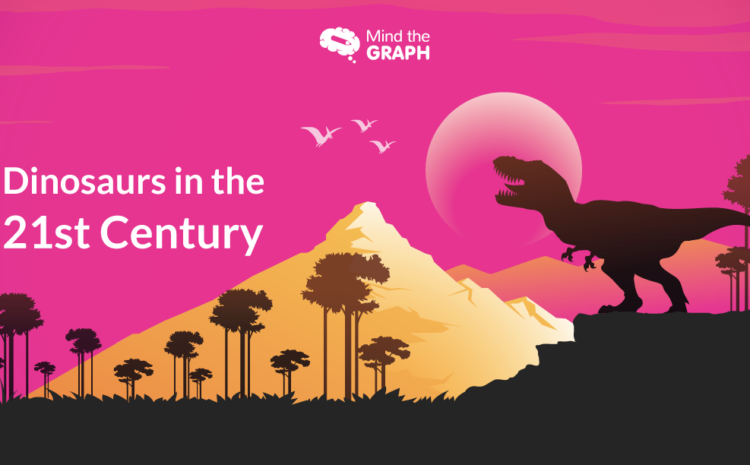That dinosaurs were extinct – about 65.5 million years ago – is not news for anybody.
The dinosaurs ruled the surface and skies of the planet Earth for 140 million-years while we – humans – are here for only 200 thousand-years.
The most accepted theory about the mass-extinction is that an asteroid provoked the death of almost everything alive on Earth – including dinosaurs – causing the end of the reptile’s era.
Looking into all the available data about the topic, some paleobiologists say that the extinction of the dinosaurs would have happened, even if the asteroid had not hit Earth, because of an apparent evolutionary stagnation of dinosaurs species.
However, another group of paleobiologists claim that the analysis of the available data has been erroneously evaluated, they say that without the asteroid hit maybe the dinosaurs would still be here – consequently we wouldn’t.
The dinosaurs lived in a turbulent time, Earth was a place with vast volcanic eruptions, global temperature and sea levels were rapidly changing.
In 1980, an article was published proposing the currently accepted theory about an asteroid causing the Cretaceous-Tertiary Extinction, the last period of dinosaur’s life.
The day that the asteroid hit Earth is called the Cretaceous–Paleogene (K–Pg) extinction event. The theory is supported by the evidence of a thin layer of sediment called the K–Pg boundary.
This thin layer contains high levels of iridium, a rare metal to be found on Earth, but highly present in asteroids.
One interesting fact is that the layer of iridium is present throughout the world, but in the Yucatán Peninsula the rare metal was found in a much higher quantity.
In the early ’90s, researchers discovered the asteroid crater in the Gulf of Mexico, confirming the K-Pg event.
The dinosaur’s evolutionary path is still a topic that raises disagreements among the scientific community.
Several discussions have been raised due to differences in sampling and not standardized analytical methodologies.
To fully understand and reconstruct the diverse patterns of that period is extremely difficult and subjective as researchers tend to have a hierarchical bias.
In addition, in an attempt to correct these divergent factors, different methods are applied, leading scientists to different conclusions.
So, the main discussion among scientists is, if dinosaur’s species were in decline even before the K-Pg event, or if the species diversification and evolution was still going on when the asteroid hit Earth.
In an article published in the Royal Society Open Science, Bonsor and colleagues from the University of Bath and the Natural History Museum tried to reach an answer for that debate.
Using dinosaurs’ evolutionary trees and specialized statistical modeling. The study took into account the tendency of growth and evolution of new species that were ascending at that time.
The evolutionary path of the dinosaur’s species was marked by many ups and downs.
When a new ruler species emerged, they lived for a while until a newer and stronger species came around, causing the decline and extinction of the previous one.
“Previous studies done by others have used various methods to draw the conclusion that dinosaurs would have died out anyway, as they were in decline towards the end of the Cretaceous period.
However, we show that if you expand the dataset to include more recent dinosaur family trees and a broader set of dinosaur types, the results don’t actually all point to this conclusion – in fact only about half of them do”, said Joe Bonsor, the lead author of the study in a statement.
Bonsor and his research group do not support the theory that the dinosaurs were in decline by the time of K-Pg. The last dinosaurs’ species who were rising have not been considered into the data of previous studies.
They claim that if the asteroid hadn’t crushed into the Yucatán Peninsula, the dinosaurs would have continued to rise and evolve, continuously ruling the planet Earth.
However, Bonsor recognizes that “The largely unavoidable biases in the fossil record and lack of data can often show a decline in species”, but at the same time, he says, science cannot fully understand the reality of that time.
“We may never know the true rates of evolution of the dinosaurs, since the only way to know for sure is to fill in the gaps in the record to get the best answer, and we simply don’t think we’re there just yet,” says Bonsor.
If it was not for the K-Pg extinction event, the reptile era maybe would never have ended, and the mammals would never have evolved or conquered new niches on land area, leading to the world as we know today.
If the dinosaurs for some reason had survived, and we live together it would be like one of the main characters of the movie Jurassic World the Fallen Kingdom, said: “… the first time you see a dinosaur, it’s like a miracle, you read about them in books, you see the bones in museums, but you don’t really believe it.
They are like myths. And then you see, that first one alive”.
Fortunately, – contrarily to what happens in the movie – we cannot see one dinosaur alive, and it will remain a mystery for us and for scientists what really happened.
For now, fossil studies are the only way we have to better understand the dinosaur’s reality.
Yes everyone, Mind the Graph has dinosaur illustrations for you to use. You can use them to show your research in a visual and attractive way.
With Mind the Graph you can create illustrations, infographics templates, and graphical abstracts using our illustrations gallery available, from earth sciences to geography.
But, if you need a very specific illustration we’ll design it for you! If you can’t find the perfect resources for communicating your science, you can count on our on demand service. All made specifically for you by professional designers and curated by our science team.
Start using Mind the Graph right now.

Subscribe to our newsletter
Exclusive high quality content about effective visual
communication in science.





